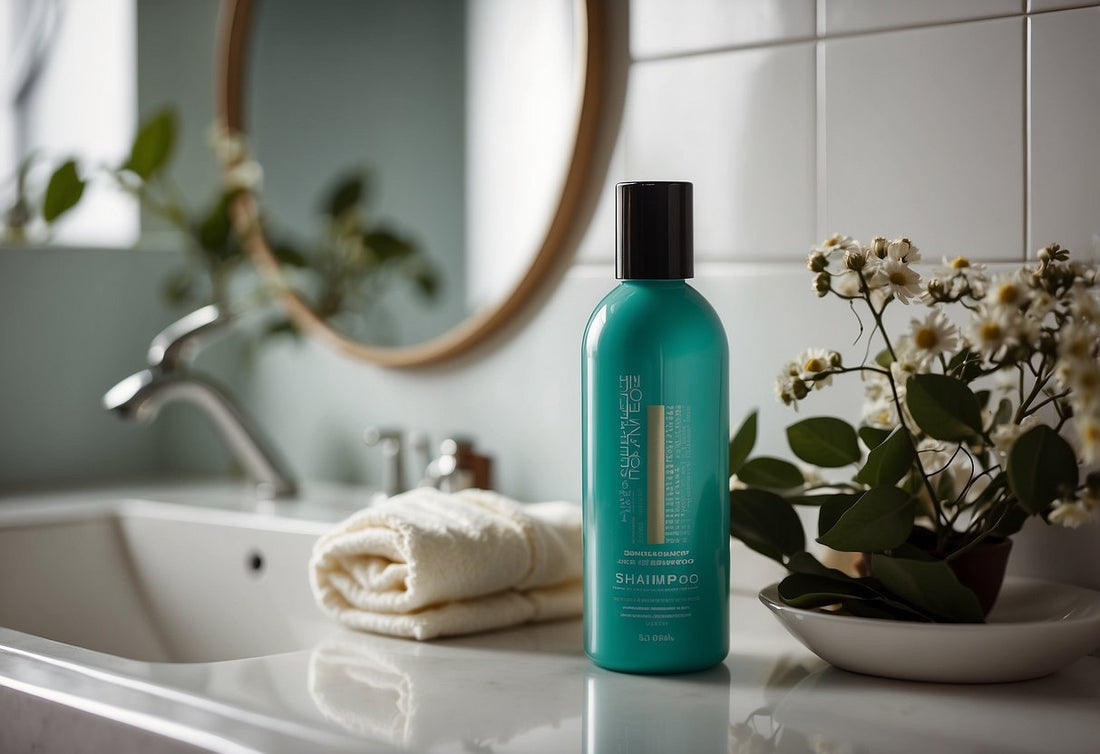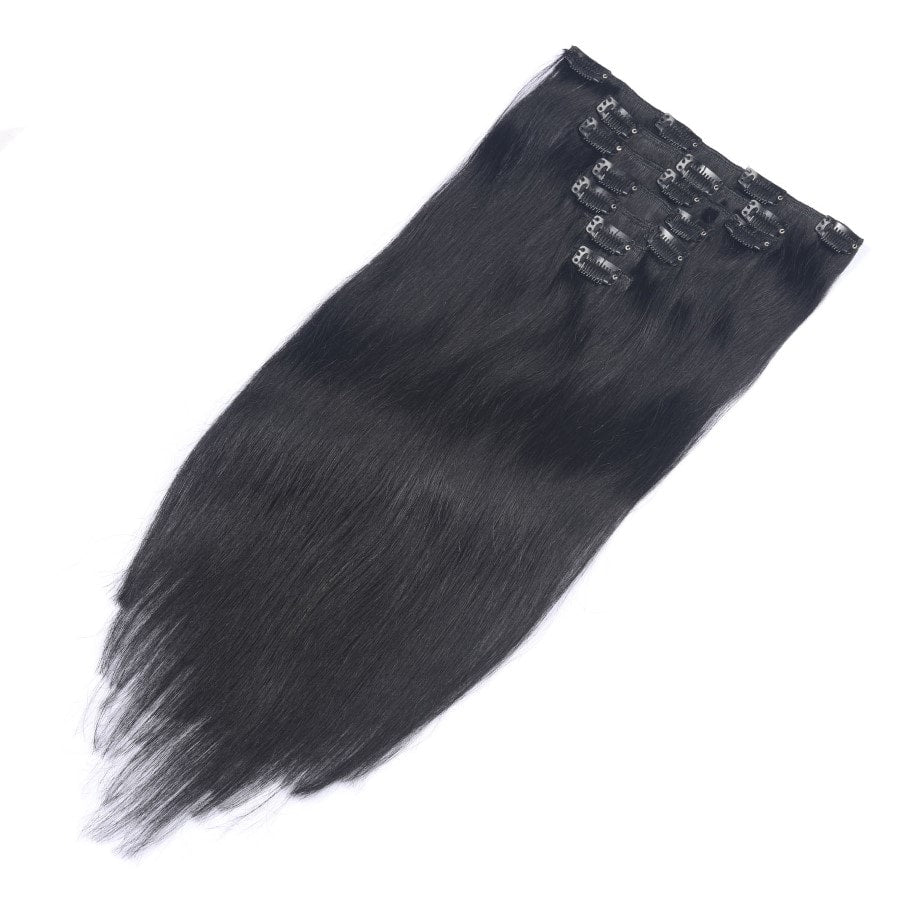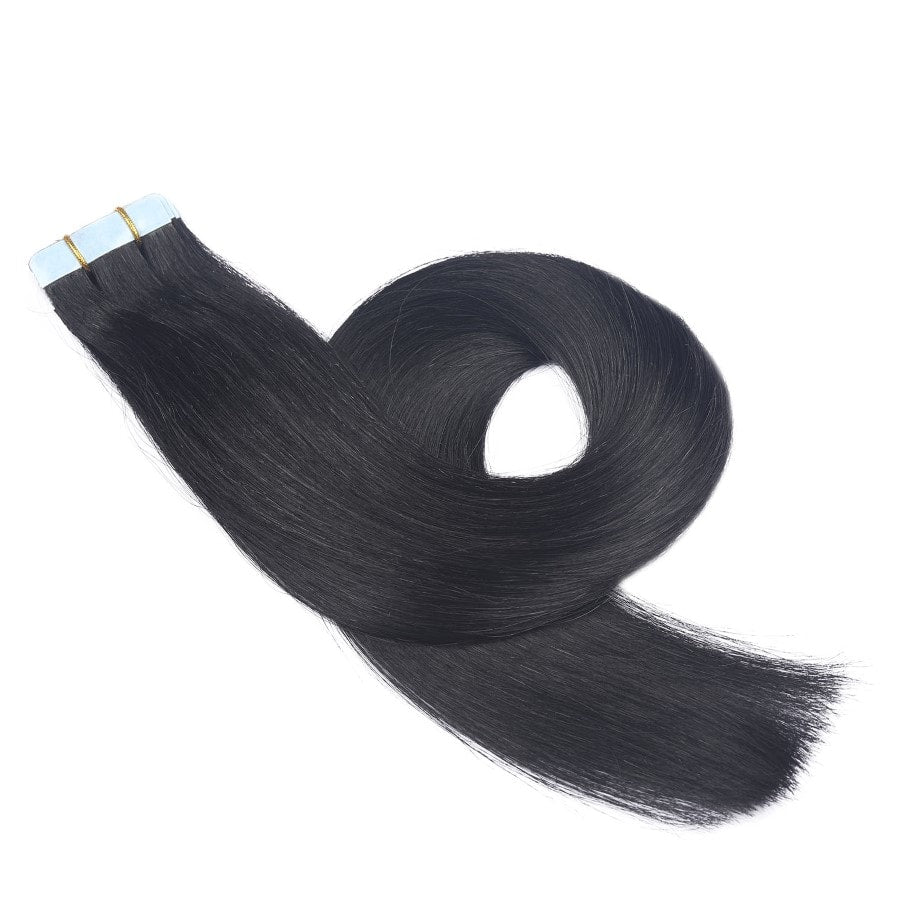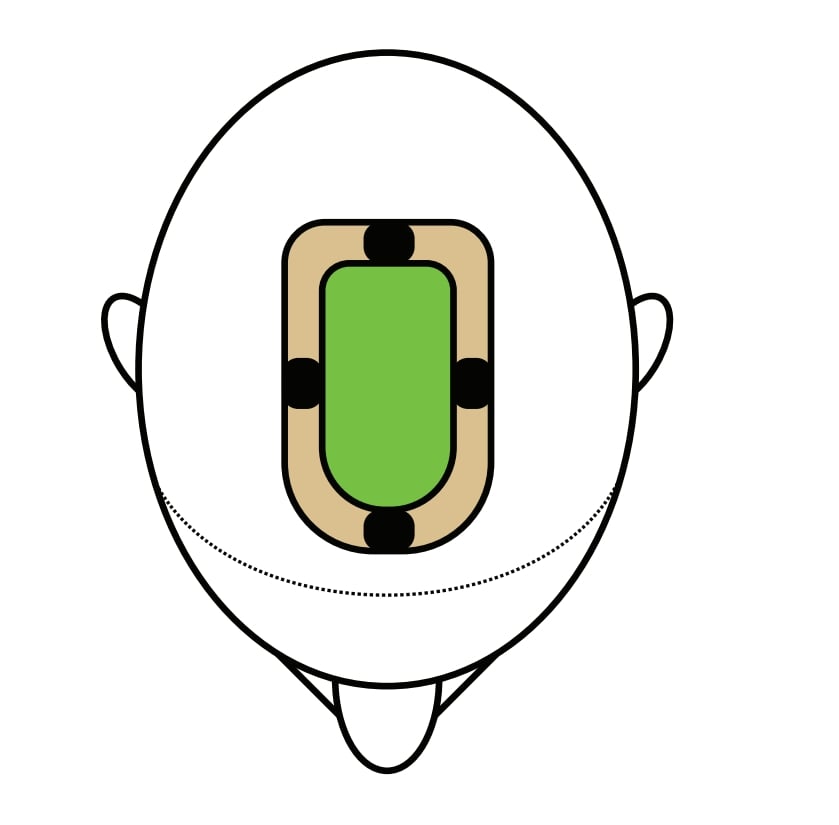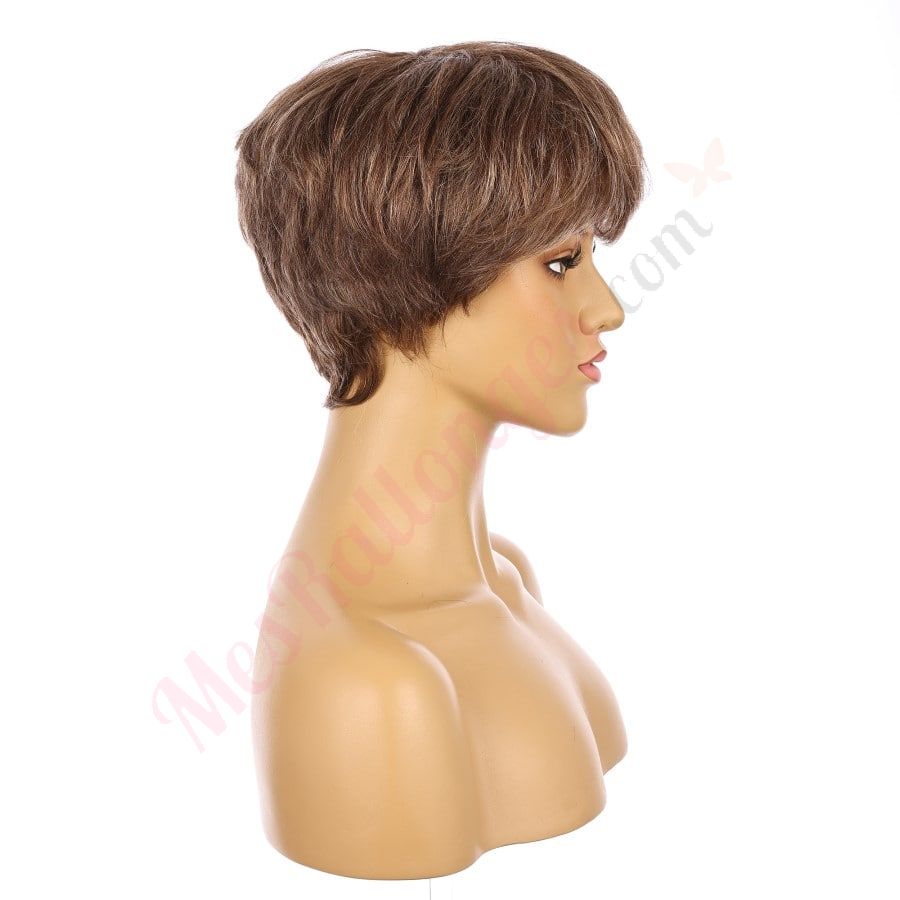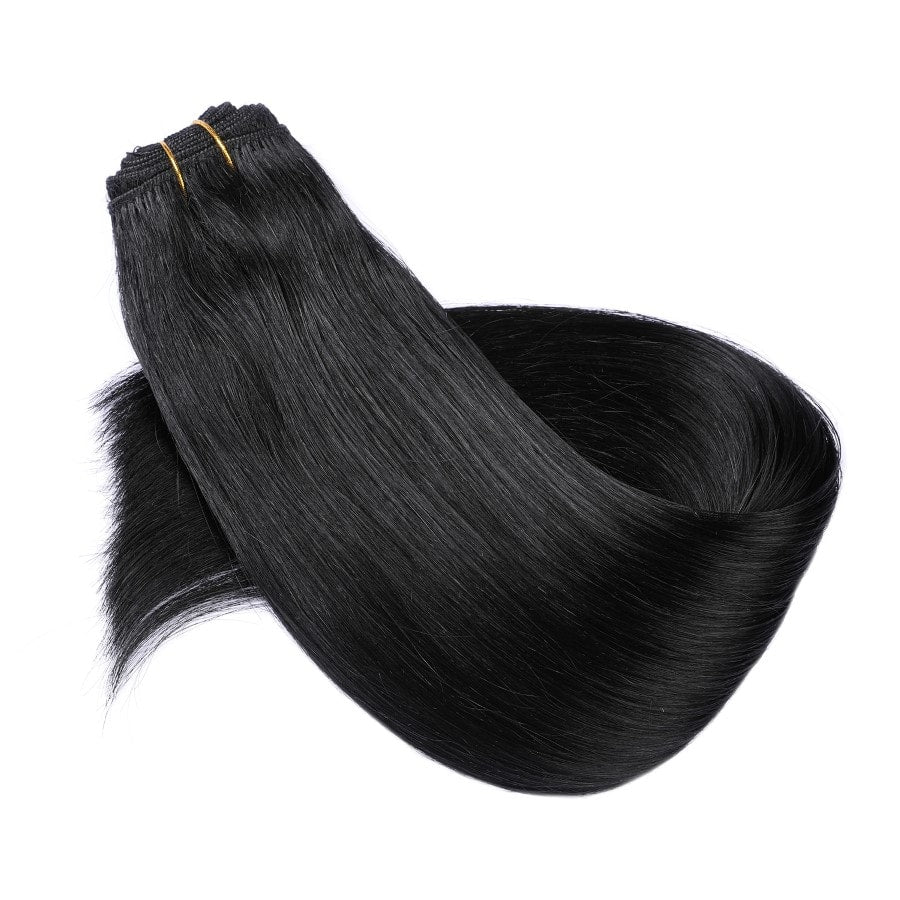L'idée de se laver les cheveux avec des extensions cousues peut susciter de nombreuses questions. Nous sommes là pour dissiper toute confusion et rendre le processus simple et accessible. Oui, vous pouvez laver vos cheveux avec des extensions cousues, mais il y a des étapes spécifiques à suivre pour obtenir les meilleurs résultats. Soins appropriés garantit que vos extensions restent belles et durent plus longtemps.

Nous aimons nos extensions cousues car elles offrent polyvalence et style, mais il est essentiel de les entretenir correctement. Cela signifie qu'il faut se préparer pour le jour du lavage et suivre quelques techniques simples. Du démêlage initial à l'utilisation des bons produits, nous vous guiderons tout au long du processus. Laver vos extensions cousues de la bonne manière permet de garder les extensions et vos cheveux naturels en bonne santé.
Vous souhaitez en savoir plus sur le processus de lavage, les routines et les choses à faire et à ne pas faire ? Nous avons toutes les étapes et les conseils dont vous avez besoin. Plongeons dans les meilleures pratiques pour que nos extensions cousues restent fabuleuses et que notre cuir chevelu reste frais.
Principaux points à retenir
- Vous pouvez laver les cheveux avec des extensions cousues en suivant quelques étapes spécifiques.
- Un entretien approprié implique de démêler et d'utiliser les bons produits.
- Maintenir la santé du cuir chevelu est essentiel pour des extensions belles et durables.
Comprendre les extensions de cheveux cousues
Les extensions de cheveux cousues sont un moyen fantastique d'ajouter de la longueur, du volume et parfois même de la couleur à nos cheveux naturels. Elles sont fixées en cousant des trames de cheveux sur des sections tressées de nos propres cheveux.
Types d'extensions à coudre
Nous avons plusieurs types d'extensions à coudre parmi lesquelles choisir. Extensions de cheveux humains sont populaires parce qu'ils ont l'air plus naturels et peuvent être coiffés comme nos propres cheveux. Cheveux synthétiques est moins cher mais ne se mélange pas aussi bien et ne peut pas être coiffé avec de la chaleur.
Nous pouvons également opter pour des clips , qui sont temporaires et peuvent être mis en place et retirés facilement. Microliens et bandes-ins il existe d'autres méthodes, mais cousu ou les tissages cousus restent un favori pour leur durabilité et leur aspect naturel.
Avantages des extensions à coudre
Il y a de nombreux avantages à choisir des extensions cousues. Elles ajoutent longueur et volume à nos cheveux, nous permettant d'obtenir une variété de styles. Les coutures peuvent également protéger nos cheveux naturels en lui donnant une pause dans le coiffage quotidien et l'exposition à la chaleur.
Parce qu'ils sont faits de vrais cheveux humains, ils offrent un aspect naturel que les options synthétiques ne peuvent égaler. De plus, si nous prenons bien soin de nos extensions, elles peuvent durer plusieurs semaines, ce qui en fait une solution rentable à long terme.
Préparation pour le jour de lessive
Le lavage de nos extensions cousues les maintient avoir l'air frais et notre cuir chevelu en bonne santé. Planifier des jours de lavage et choisir les bons produits sont des étapes essentielles.
Planifier votre lavage
Il est important de créer un programme de lavage adapté à nos cheveux. En règle générale, il est recommandé de laver les extensions cousues tous les 7 à 10 jours. Cela évite l'accumulation de produit et maintient le cuir chevelu propre. Nous devons planifier notre journée de lavage lorsque nous disposons d'un peu de temps supplémentaire. Se précipiter dans le processus peut conduire à des résultats moins efficaces.
La régularité est essentielle. Un lavage régulier aide maintenir la qualité des cheveux naturels et des extensions. En respectant un programme, nous prenons soin de nos cheveux et leur prodiguons les soins qu'ils méritent.
Choisir les bons produits
Sélectionner les bons produits pour notre journée de lessive est essentiel. Shampoing sans sulfate est plus doux et moins susceptible de dépouiller le cuir chevelu et les cheveux huiles naturelles . En utilisant un shampoing hydratant peut aider à garder les cheveux hydratés.
Le conditionnement est tout aussi important que le shampooing. Nous devrions opter pour un revitalisant sans sulfate qui procure une hydratation en profondeur. Produits avec huiles naturelles comme l’argan ou le jojoba sont particulièrement bénéfiques.
Un flacon applicateur peut aider à appliquer les produits directement sur le cuir chevelu et les tresses, assurant une distribution uniforme sans perturber les extensions. Diluer les produits avec de l'eau peut les rendre plus faciles à appliquer et à rincer.
En choisissant les bons produits et en planifiant nos lavages, nous garantissons que nos extensions cousues restent vibrantes et saines.
Le processus de lavage
Il est essentiel de garder nos extensions cousues propres et bien entretenues pour un look soigné. Passons en revue les étapes clés pour garantir que nos cheveux restent frais et sains.
Mouillez vos cheveux correctement
Nous commençons par mouiller nos cheveux en utilisant eau tiède . Ceci est important car l'eau chaude peut dépouiller les cheveux de leurs huiles naturelles, provoquant un dessèchement . Placez votre tête sous la douche, en veillant à ce que l'eau coule des racines jusqu'aux pointes de vos extensions de cheveux.
Utilisez doucement vos doigts pour guider l'eau dans les cheveux. Il est essentiel de Évitez les nœuds et les enchevêtrements qui peuvent se produire si vous êtes brutal pendant cette étape. Bien mouiller les cheveux les prépare à l'action efficace du shampooing et de l'après-shampooing.
Application du shampoing et de l'après-shampoing
Ensuite, nous appliquons un shampooing sans sulfate. L'utilisation d'un flacon applicateur peut nous aider à appliquer le produit directement sur notre cuir chevelu et nos tresses. Diluer le shampooing avec de l'eau peut faciliter son application et son étalement.
Il faut masser doucement le shampoing sur le cuir chevelu avec le bout des doigts et non avec les ongles. Cela permet de nettoyer le cuir chevelu sans l'abîmer. Après avoir rincé le shampoing à l'eau tiède, on applique ensuite un après-shampoing sans sulfate. Appliquez-le principalement sur les extensions pour les garder hydratées.
Rincer abondamment
Le rinçage est peut-être la partie la plus critique du processus. Nous devons nous assurer que tout le shampoing et l'après-shampoing sont complètement éliminés de nos cheveux. Les résidus peuvent entraîner une accumulation de produit, ce qui alourdit les cheveux et les rend ternes.
Rincez vos cheveux à l'eau tiède, du cuir chevelu jusqu'aux pointes, en veillant à ce que l'eau soit claire. Utilisez délicatement vos doigts pour éliminer tout résidu de produit. Un rinçage soigneux garantit que vos cheveux restent légers, propres et prêts à être coiffés.
Grâce à ces étapes, nous pouvons garder nos extensions cousues fabuleuses et éviter les erreurs courantes !
Séchage et démêlage

Quand Prendre soin des extensions cousues , les sécher et les démêler correctement sont essentiels pour garder les cheveux beaux et sans dommages. Découvrons les techniques les plus efficaces.
Techniques de séchage douces
Après le lavage, il est essentiel de sécher soigneusement nos extensions. Un frottement vigoureux avec une serviette peut provoquer des cassures, il faut donc tapoter nos cheveux avec une serviette en microfibre pour éliminer l'excès d'eau. L'utilisation d'un sèche-cheveux à casque à basse température permet de sécher uniformément le cuir chevelu et les extensions.
Le séchage à l'air libre est une autre excellente option pour éviter les dommages causés par la chaleur. Si nous choisissons d'utiliser un sèche-cheveux, nous devons toujours utiliser un spray protecteur de chaleur et maintenir le sèche-cheveux sur un réglage froid ou bas. Cela empêche les cheveux de devenir cassants.
Démêler sans abîmer
Il est nécessaire de démêler les extensions cousues pour éviter les nœuds et garder les cheveux lisses. Il est préférable de commencer par utiliser un peigne à dents larges, qui est doux pour les extensions. Commencez toujours par démêler les pointes et remontez vers les racines pour éviter de tirer sur les cheveux.
L'utilisation d'un après-shampoing sans rinçage ou d'un spray démêlant peut rendre ce processus encore plus fluide. Brosser les cheveux pendant qu'ils sont mouillés et chargés de produit permet de démêler facilement les nœuds. Dormir sur une taie d'oreiller en soie permet de réduire les frottements et les nœuds pendant la nuit, ce qui rend les cheveux plus faciles à coiffer le matin.
Gardons nos extensions cousues impeccables avec celles-ci conseils séchage et démêlage !
Entretenir vos extensions cousues
Pour que les extensions cousues soient belles, un entretien approprié et un coiffage soigné sont essentiels. Nous devons veiller à les garder propres et à les protéger des dommages causés par la chaleur.
Conseils d'entretien quotidien
Prendre soin de nos extensions cousues tous les jours permet de les garder fraîches et éclatantes. Tout d'abord, nous devons garder notre cuir chevelu propre en le lavant régulièrement. Utilisez un shampoing doux sans sulfate. Massez le shampoing sur le cuir chevelu du bout des doigts pour éviter de tirer sur les mèches. Rincez abondamment pour éliminer toute accumulation de produit.
L'hydratation est très importante. Appliquez un après-shampoing léger ou un spray sans rinçage sur votre cuir chevelu et sur le tissage. Évitez de mettre trop de produit directement sur les mèches pour éviter qu'elles ne se desserrent. Il faut également démêler nos extensions en utilisant délicatement un peigne à dents larges ou nos doigts, en commençant par les pointes et en remontant.
La nuit, nous pouvons envelopper nos cheveux avec un foulard en soie ou en satin pour éviter les nœuds et les frisottis. Cela aide également à protéger nos extensions pendant que nous dormons.
Coiffage et utilisation de la chaleur
Quand Lorsque nous coiffons nos extensions cousues , nous devons faire attention à la chaleur. Utilisez toujours un spray protecteur de chaleur avant d'appliquer des outils chauffants comme des fers plats ou des fers à friser. Cela minimise les dommages causés à nos cheveux naturels et aux extensions.
Réglez nos outils chauffants sur un réglage faible ou moyen. Une chaleur élevée peut provoquer un dessèchement ou une fragilité des extensions. Coiffons nos cheveux en sections pour nous assurer que chaque partie reçoit une chaleur uniforme.
Nous devrions également penser à des options de coiffage à faible chaleur comme les rouleaux ou les tiges flexibles. Ces méthodes peuvent donner à nos extensions de belles boucles ou ondulations sans les exposer à des températures élevées. De plus, ces styles sont un excellent moyen de varier les plaisirs et de garder nos cheveux frais !
Surveillance de la santé du cuir chevelu

Maintenir un cuir chevelu sain Il est essentiel de porter des extensions cousues. En évitant les tensions excessives et en utilisant des soins hydratants pour le cuir chevelu, nous pouvons assurer la longévité de nos extensions et la santé de nos cheveux naturels.
Éviter les tensions excessives
Une tension excessive sur notre cuir chevelu peut entraîner des problèmes tels que des cassures et des irritations. Lorsque vous faites coudre des extensions, il est important de vous assurer qu'elles ne sont pas trop serrées. Nous devons toujours communiquer avec notre coiffeur pour éviter toute tension inconfortable. Les signes d'une tension excessive comprennent des maux de tête et des zones rouges et enflammées sur le cuir chevelu.
Des ajustements réguliers peuvent être nécessaires. Notre cuir chevelu peut changer au fur et à mesure que nos cheveux naturels poussent. Il est donc important de consulter un coiffeur toutes les quelques semaines pour vérifier la tension afin de prévenir tout dommage potentiel. Il est essentiel d'écouter notre corps et de traiter rapidement tout inconfort.
Soins hydratants pour le cuir chevelu
Il peut être difficile de garder notre cuir chevelu hydraté avec des extensions cousues, mais c'est essentiel pour favoriser une croissance saine des cheveux. Nous pouvons utiliser des traitements du cuir chevelu conçus pour hydrater sans utiliser de produits chimiques agressifs qui peuvent irriter notre cuir chevelu. Les huiles naturelles comme l'huile de jojoba ou d'argan sont d'excellentes options.
L'application régulière de ces huiles, en particulier autour des sections tressées, peut aider à empêcher notre cuir chevelu de devenir sec et qui démange . Masser doucement le cuir chevelu lors de l'application des huiles peut également stimuler les follicules pileux, favorisant ainsi une croissance plus saine. Les sprays hydratants peuvent également être utiles pour ajouter de l'humidité sans alourdir les cheveux.
En nous concentrant sur ces pratiques, nous pouvons profiter de nos extensions cousues tout en garantissant que notre cuir chevelu reste sain et confortable.
Entretien et soins professionnels
Pour que les extensions cousues durent plus longtemps et restent belles, des soins appropriés et des visites régulières chez le coiffeur sont essentiels. Savoir quand il est temps de prendre rendez-vous et comment entretenir vos extensions au quotidien peut faire une grande différence.
Quand consulter un coiffeur
Des rendez-vous réguliers avec un coiffeur permettent de garder nos extensions cousues en parfait état. Il est recommandé de rendre visite à votre coiffeur toutes les 6 à 8 semaines. Au cours de ces visites, il pourra vérifier s'il y a des problèmes avec la pose, comme des fils détachés ou des zones à resserrer.
Un suivi professionnel permet de s'assurer que nos extensions sont correctement entretenues. Un coiffeur vous donnera également des conseils sur la façon de prendre soin de vos cheveux et de vos extensions entre deux visites. Si vous remarquez des dommages ou une gêne, prenez immédiatement rendez-vous.
L'importance d'un entretien régulier
L'entretien quotidien des extensions cousues est essentiel pour leur longévité. Nous devons laver et entretenir nos extensions régulièrement avec des produits sans sulfate. Cela permet de garder les cheveux propres sans les priver de leurs huiles naturelles. Il est préférable de sécher nos cheveux à l'air libre autant que possible pour réduire le stress sur les racines.
La nuit, évitez de dormir avec les cheveux mouillés et attachez-les toujours en queue de cheval ou en tresse lâche. Cela évite les nœuds et les cassures. Des routines d'entretien régulières aident à garder nos extensions fraîches et naturelles.
Même si cela peut prendre un certain temps, les avantages d'un entretien approprié en valent la peine. Nos extensions cousues auront fière allure et dureront plus longtemps, nous permettant de nous sentir confiantes et élégantes !
Questions fréquemment posées
Parlons de la façon de garder ces extensions de cheveux cousues fabuleuses, de les laver correctement et d'éviter les problèmes courants.
Comment pouvez-vous garder des extensions de cheveux cousues superbes à la maison ?
Pour que vos extensions restent belles, hydratez régulièrement vos cheveux et votre cuir chevelu. N'oubliez pas de dormir avec un bonnet en satin ou en soie pour évitez les frisottis . Et ne surchargez pas vos cheveux avec des produits coiffants qui peuvent provoquer des accumulations.
Quelle est la meilleure façon de laver un tissage cousu avec des restes ?
Commencez par démêler délicatement vos cheveux, puis lavez votre cuir chevelu avec un shampooing sans sulfate. Lavez soigneusement les cheveux qui ne sont pas traités sans tirer dessus. Utilisez un après-shampoing hydratant , puis rincer abondamment.
Pouvez-vous partager quelques conseils sur l’entretien des extensions de cheveux cousues pour les garder fraîches ?
Brossez vos extensions Lavez vos cheveux tous les jours avec un peigne à dents larges. Évitez d'utiliser une chaleur excessive et utilisez toujours un protecteur thermique. Coupez les pointes toutes les 6 à 8 semaines pour éviter les fourches et conserver une apparence saine.
Est-il possible de laver une tresse cousue sans mouiller les tresses en dessous, et comment ?
Vous pouvez utiliser un vaporisateur pour appliquer le shampoing directement sur votre cuir chevelu, puis masser doucement. Évitez de tremper toute la tresse. Utilisez un chiffon humide pour essuyer les tresses et appliquez ensuite un après-shampoing sans rinçage.
Quels sont les inconvénients courants des extensions de cheveux cousues ?
Les extensions cousues peuvent parfois provoquer des tensions sur le cuir chevelu, entraînant une gêne ou cassure des cheveux . Ils peuvent nécessiter des rendez-vous d'entretien réguliers et des soins inappropriés peuvent entraîner enchevêtrement ou matage .
Existe-t-il des techniques spéciales pour laver les extensions cousues alors qu'elles sont encore dans vos cheveux ?
Utilisez un vaporisateur pour mouiller les cheveux et appliquez un shampooing dilué directement sur le cuir chevelu. Massez doucement le cuir chevelu et rincez avec un filet d'eau. Appliquez ensuite un après-shampooing léger et assurez-vous que les cheveux sont complètement secs pour éviter la moisissure.

